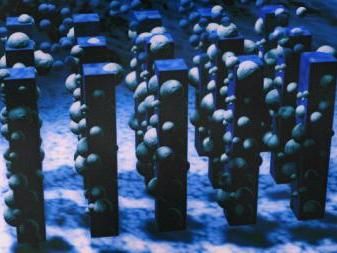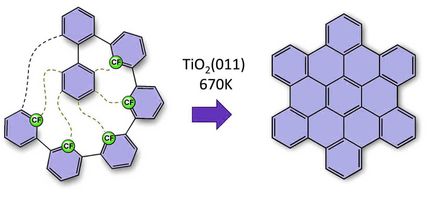Host-guest nanowires for efficient water splitting and solar energy storage
Advertisement
California is committed to 33 percent energy from renewable resources by 2020. With that deadline fast approaching, researchers across the state are busy exploring options. Solar energy is attractive but for widespread adoption, it requires transformation into a storable form. Researchers report that nanowires made from multiple metal oxides could put solar ahead in this race.

Artist's rendering of TiO2 nanowires act as hosts for BiVO4 guests in a water-splitting reaction.
Peidong Yang
One way to harness solar power for broader use is through photoelectrochemical (PEC) water splitting that provides hydrogen for fuel cells. Many materials that can perform the reaction exist, but most of these candidates suffer from issues, ranging from efficiency to stability and cost. Peidong Yang and colleagues designed a system where nanowires from one of the most commonly used materials (TiO2) acts as a "host" for "guest" nanoparticles from another oxide called BiVO4. BiVO4 is a newly introduced material that is among the best ones for absorbing light and performing the water splitting reaction, but does not carry charge well while TiO2 is stable, cheap and an efficient charge carrier but does not absorb light well. Together with a unique studded nanowire architecture, the new system works better than either material alone. The authors state their approach can be used to improve the efficiencies of other photoconversion materials.
Original publication
Other news from the department science

Get the chemical industry in your inbox
By submitting this form you agree that LUMITOS AG will send you the newsletter(s) selected above by email. Your data will not be passed on to third parties. Your data will be stored and processed in accordance with our data protection regulations. LUMITOS may contact you by email for the purpose of advertising or market and opinion surveys. You can revoke your consent at any time without giving reasons to LUMITOS AG, Ernst-Augustin-Str. 2, 12489 Berlin, Germany or by e-mail at revoke@lumitos.com with effect for the future. In addition, each email contains a link to unsubscribe from the corresponding newsletter.





























































